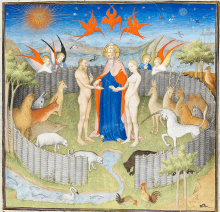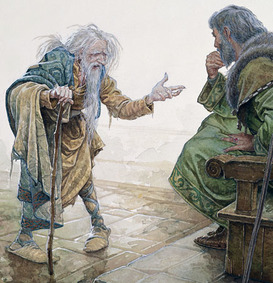COLOUR The Art & Science of Illuminated Manuscripts Anne Maria Clarke @ The Fitzwilliam Museum Cambridge UK

Whilst in Cambridge yesterday I had the unexpected pleasure of both discovering and attending this beautiful exhibition at the Fitzwilliam Museum. Someone told me about it a couple of months ago but it slipped my mind - then, upon arriving in the city my attention was immediately grabbed by the exquisite exhibition poster displayed on the railings opposite Kings College.
Created to coincide with the museum's 200th anniversary - this free exhibition features 150 treasures - some never displayed to the public before - from the coveted collection of illuminated manuscripts said to be the most extensive in the entire world.
The exhibition opened on the 30th July and has just been extended - due to popular demand - until the 21st January 2017 so there is still chance to see it if this is your cup of tea.
From these precious pages - and not withstanding the oral tradition - some of the greatest wisdoms and sacred teachings of the past have been brought down to us - without them - says Professor John Lowden of the Coutauld Institute of Art,
'..we would know nothing of Socrates or Aristotle, nothing of Jesus or Mohammed...'
The first illuminated Christian manuscripts were brought to England in 597 by Benedictine monks from Italy charged with converting the population to the new religion. The lavishly decorated images, depicting scenes from the gospels easily conveyed the stories to the vast majority of people who couldn't read.
They are things of great beauty too - whose content Germaine Greer tells us, not only decorated but venerated and 'added weight to the word of God.'
The science of this unique decorative style is a theme of the exhibition which tells the story of the manuscripts construction from the creation of the different parchments utilising various animal skins - through to the sourcing of pigments and their different preparations.
Many years ago I read the novel - The Colour of Heaven - by James Runcie which tells an imaginative tale of a young adventurer - slightly reminiscent of Paolo Coelho's Alchemist - setting off from Venice in the Middle Ages in quest of the rare Lapis Lazuli - only to be found in distant Afghanistan. It is this precious blue stone - more costly even than gold that became the colour of heaven in medieval art - and the colour most often chosen to adorn the Virgin Mary as we see in the exhibition's main poster. There is much gold too on display and silver leaf creating the highly prized illuminations which were said to glow and shimmer in the candle light as Mass was being said and sung.
Such images - as the exhibition audio guide explains - were not just meant to viewed once or indeed viewed quickly - they were intended more as meditations to be contemplated slowly and repeatedly - their aim being to draw the observer in and beyond themselves - toward that which is sacred and transcendent.
Alongside the illuminations from the bible there are pages from various versions of the devotional Book of Hours as well as other sacred texts from around the world including an exquisite Byzantine Gospel book, an Ottoman Qur'an and huge alchemical scroll depicting the transformation of 'base' metals into 'noble' ones.
In the later middle ages of course, illuminated manuscripts were commissioned by wealthy merchants and the like who set their artists to the creation of books with more secular themes and some of these are featured in the exhibition too. It was an art that flourished between c. 600 – 1600 but it would not withstand the coming of Gutenburg and the printing press in the mid 15th together with the impending rise of Protestantism in northern Europe and its disdain for the excesses of Catholic art - of which the heavily embossed hand made illuminations were seen as indicative.
Pondering this vast collection one can't help wondering how the Fitzwilliam museum came to be in possession of it? Part of the answer seems to be that after the reformation which in England involved the destruction and pillaging of monasteries and churches throughout the land, many of the most treasured manuscripts mysteriously fell into the hands of the Protestant universities and particularly the University of Cambridge. Whatever we may feel about this historic appropriation - the good news is that under the universities care these fragile pages have been painstakingly preserved and restored for posterity as part of our collective heritage and although the majority must now be viewed in a secular setting, through protective glass and in semi- darkened conditions - they are still thankfully in existence - still wonders for us all to behold!
much love
Anne Maria Clarke
x x x
http://www.youtube.com/c/annemariaclarke
More fairy-stories, myths & legends by
Anne Maria Clarke
http://www.archivepublishing.co.uk
www.annemariaclarke.net










